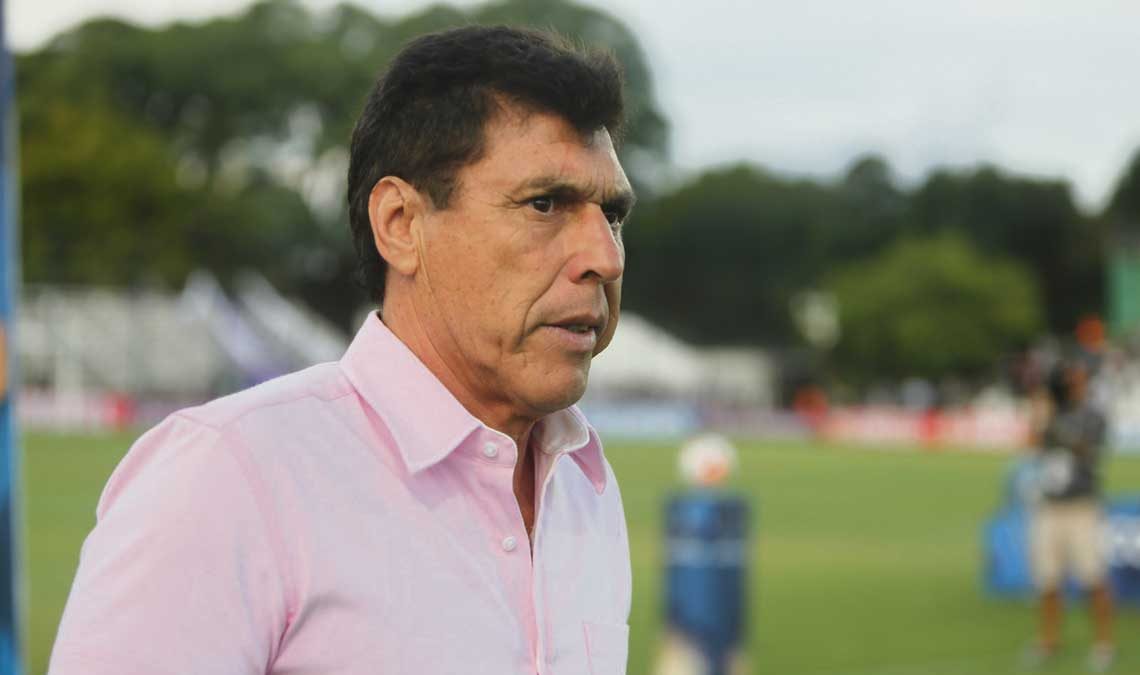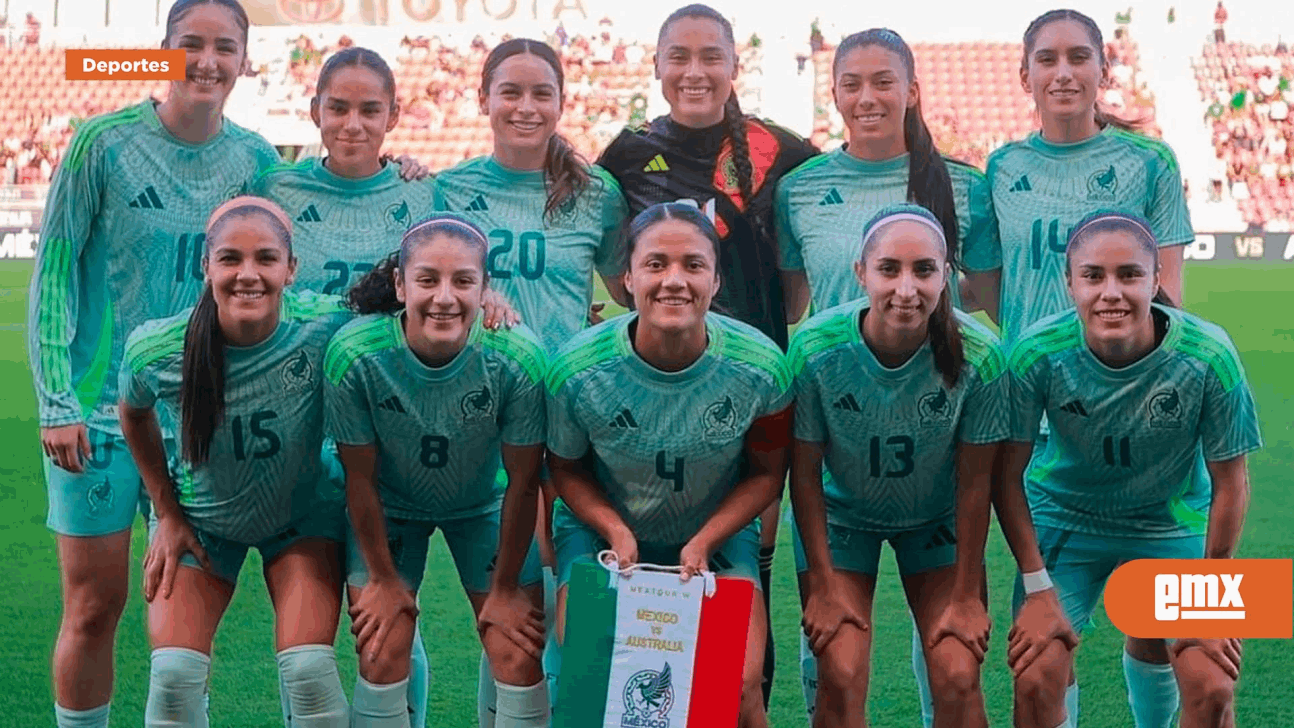In 1990, my dad gave me a camcorder, one of those cassette tape cameras, much smaller than the “real” TV cameramen.
At the same time, since my activity was divided between journalism and my father’s travel agency, this allowed me to participate in the tenders I won to organize several trips abroad for Peñarol, Nacional and the Uruguay national team in international competitions.
My privileged position in terms of getting accurate information in times without internet or cell phones, traveling on the same planes and hotels, when restrictions were less, and even sharing buses in some cases, allowed me to use that camera (much bigger than a cell phone , but much smaller than the ones on the channels) and record my initial program on Channel 5 (La Hora de los Deportes) part of the excursions and even the dressing room party situations, etc.
And there I discovered (in the 1990s) that people were fascinated by seeing what was not seen in broadcasting matches.
This clip was called “The Eyes and Ears of a Fan”. With the 21st century and smaller cameras, the Celeste was born.
And there everything exploded. Qualifications, friendly matches on FIFA dates, the World Cup with great victories, draws combinations From cups to conferences, they’ve done what they want.
It has become a classic for fans and with this century it has only increased with the passing of hundreds and thousands of Uruguay fans who travel the world and also hundreds of Uruguayans on trips who have long lived abroad, always finding in Uruguay matches an excuse to reunite with their roots.
The possibility of seeing oneself reflected in the celestial camera in the times when cell phones did not yet have a camera, nor roaming, nor fast internet, did the rest.
Thus, other important events that I was invited to were added.
I want to point out that these invitations never included tickets or accommodations, but they did allow me to attend with the support of my sponsors and companies (especially Tinfield).
To cite some symbolic examples I would like to highlight:
- The Golden Boot was awarded to Diego Forlan in Madrid as Europe’s top scorer for the second time, in this case defending Atlético de Madrid in 2010.
- Peñarol gets the title of Champion of the Century in London alongside Fernando Morena, Nestor Goncalves and Juan Pedro Damiani in 2010
- ‘Loco’ Abreu Nominated as Rio de Janeiro’s Brilliant Citizen of 2011 for his Career at Botafogo
- Pintos Saldanha (USA and World Champion in 1988) was honored in New Jersey in 2016 by the New York-New Jersey Branch of Bags
- Honoring two American and world champions in the 1980s such as Rodolfo Rodriguez and Arsenio Lozardo in 2019 on the occasion of the 120th anniversary of the Nacional in Miami and New York with branches of bags
- Sergio “Manteca” Martínez nominated in 2022 as a Buenos Aires fixture for his career at Boca Juniors in the 1990s
I am writing today from New York as we conclude a tour that included Miami with Juan Ramón Carrasco. Miami’s Saquen los Pañuelos Group and New York-New Jersey’s Bolsos affiliate were the hosts.
As in the previous cases that I have reviewed above, it was very exciting to meet again a large number of Uruguayans who had been outside the country, most of them for 20 to 50 years.
Amazing stories, indelible memories and different experiences of many Uruguayans around the world who find in these events a moment to feel themselves in Uruguay for a while.
Juan Ramón Carrasco was received as he was and as he is: the idol of Nacional, who in the 1970s and early 1980s competed with Morena and Peñarol.
Carrasco was South American Youth Champion with azure in 1975. He left and returned to Nacional five times as a footballer and left an indelible mark on his quality at Racing de Avellaneda and Argentina’s River Plate in times of great accidents. He started his career at the age of 8 at El Nacional, then he was 10 years old. With any number on his back, he possessed a powerful shot that saw him score several memorable goals from free kicks. He dribbled, dribbled, and helped like no one else has. In addition, he was a goalscorer, although he did enjoy leaving his teammates alone to score goals.
As a coach, he achieved amazing results with Uruguay River and Phoenix with a style of play known as “tiki-tiki” that drove thousands of fans to follow those clubs without ever being fans of anything other than JR’s style. Either way, their clubs have scored close to 100 goals in a season, which is unusual for anyone but more for teams who aren’t so big. Which made them stand out in the international cups.
His matches with our river against the greats filled the centenary more than once. His presence and the way he played generated a huge crowd.
He led Uruguay in the 2006 World Cup qualifiers in Germany, and he could have scored goals, but he could have been defeated as well. They rescued a draw with Brazil in Curitiba after losing 2-0, turned the score around in 19 minutes and came close to winning. The match ended with a score of 3 to 3.
He was not forgiven for defeat by Venezuela in the centenary in times when red wine had not yet won anything, and although he had a long way to go, he was sent off and not allowed to achieve his goal.
He has always stirred controversy due to his forward-looking way of being and has generated both a following and detractors. In Nacional, some criticized Defensor’s goal in 1997, which allowed Peñarol not to be eliminated early in the year of its fifth anniversary. He was also blamed for wearing the golden jersey in one season, and was upset that Nacional didn’t want him that year.
Despite everything, what we witnessed in Miami and New York was a wonderful show of affection and respect. In the case of the picnic held in Queens with the subsidiary in New York, attendance records were broken for this type of celebration, which already had several releases with different idols.
And he keeps asking about the field as a coach. He wants to go back to Nacional one day and, why not, to the national team. He believes he has the key, having learned from previous mistakes, to make Uruguay world champions.
We could write pages and pages of anecdotes about his career as a footballer and coach. But what I wanted to highlight today is what this visit meant to the Uruguayans from Nacional and some other club players, which was received with love and dedication.
Finally, a piece of information that seems interesting to me about his career. In Nacional, 2,231 players have played in its 124-year history. In addition, Nacional had 73 technical directors. Of all the footballers who have worn the tri-colour jersey, 25 have also been club coaches.
Of these 25, only 11 have been Uruguayan champions as players and coaches. The list is overseen by Hector “Manco” Castro, Marcelo Gallardo, Juan Martin Mojica, Martin Liguera, Álvaro Gutierrez, Hugo de Leon, Victor Esparago, Anibal Cioca, Ricardo Facio and Enrique Fernandez. The list of 10 players is completed by Juan Ramón Carrasco, who has also managed two of them, such as Argentinian Gallardo and Floridian Liguera.
It was an honor for me to record with my skycam what I lived there, to share it in my TV programs (La hora de los deportes, Buscadores and El diario del futbol), to comment on it in my program Sport 890 (what do you think??), my social networks and this page that offers me generously the morning So that it is immortalized on paper and on the Internet.
You may be interested:


:quality(85)/cloudfront-us-east-1.images.arcpublishing.com/infobae/TV5KG3BROFD67H6UVKYCYYWI5I.jpg)
/cloudfront-us-east-1.images.arcpublishing.com/eluniverso/OYLSVFSOEJHODL7FT2DUDBNJ6E.jpg)

